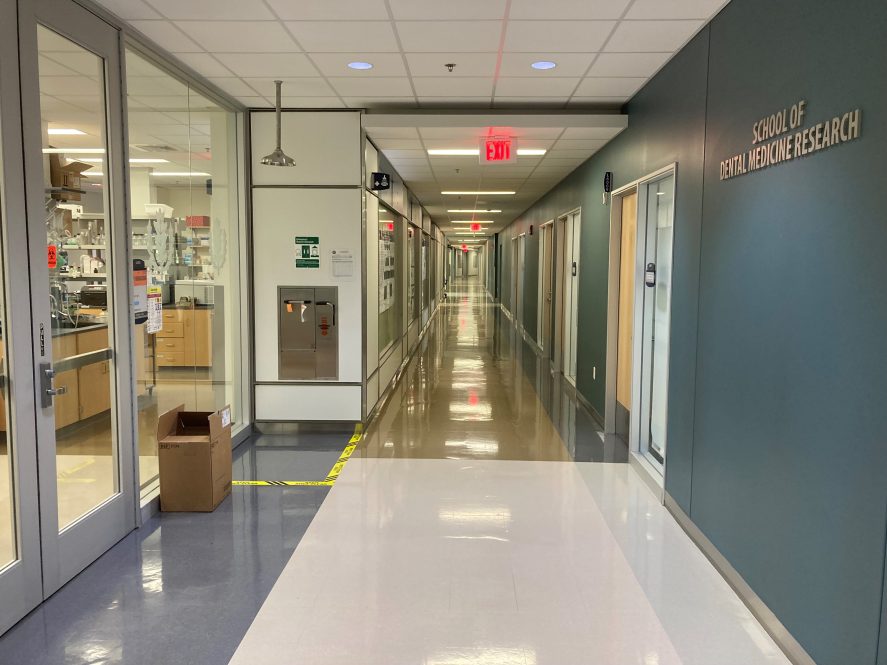By Nick Gagliardi
With the help of a faculty team of UConn engineers, Connecticut voters can feel confident that the votes they cast will not be compromised due to faulty electronic technology. 
Led by Dr. Alexander Shvartsman of Computer Science & Engineering (CSE), the UConn Center for Voting Technology Research (VoTeR Center) was established in 2006, the year that Connecticut began to upgrade its voting machines from the manual lever technology to more modern systems required for compliance with the Help America Vote Act (2002). With funding from the Secretary of the State’s Office, the VoTeR Center was commissioned to advise the State regarding the reliability of the new electronic voting machines being used in Connecticut. These new ballot-counting systems, known as the AccuVote Optical Scanners (AV-OS) are an electronic alternative to the manual lever machines, which are no longer in use.
The VoTeR Center team, in addition to Dr. Shvartsman, includes three other faculty members from the Department of Computer Science & Engineering, Drs. Aggelos Kiayias, Laurent Michel and Alexander Russell; graduate students Seda Davtyan, Derrick Lawrence, Nicolas Nicolaou and Thérèse Smith; an undergraduate assistant, Eugene Kovalev; and an engineer, Tigran Antonyan.
The Center is currently working on the technological audit for the November 2010 elections, and Dr. Shvartsman said he and his team will soon perform the analysis of the hand-counted audit returns for the elections.
The Center conducted its first technological assessment of the AV-OS machines in 2006, and in 2007 released its first technological post-election audit results from the November 2006 elections. The Center also participates in the analysis of the hand-counted ballot audits that cover 10% of the districts. The AV-OS machine uses ballots that are marked by voters to record their votes. This provides a voter verified paper trail (VVPT), which enables auditors to confirm the accuracy of the machine count, thus assuring there was no compromise in the integrity of the election.
In the August 2010 primaries, 73 precincts – or 10 percent of all polling locations statewide – were randomly selected for a hand-counted audit. Results of this audit concluded that 3.9 percent of the sample showed a discrepancy of 1 vote, and .4 percent showed a discrepancy of between four and six votes. Importantly, 95.7 percent of the state showed no discrepancy between their hand-counted vote and the electronic results. “A small number of discrepancies is inevitable,” said Dr. Shvartsman. “People sometimes mark the bubbles incorrectly, making it impossible for the machines to read them.” He added that “while any computer-based system may fail, there was no case where a follow up investigation could attribute the discrepancy to the machine error.” Audit results can be found at the VoTeR Center website, by clicking here.
The memory cards used in these machines to tabulate ballots are programmed by a LHS Associates of Methuen, MA. The specific information for each election is input into the cards, and from there is then sent to polling locations across the state. Each polling location receives four identical cards, one of which is sent to UConn for pre-election testing.
Dr. Shvartsman and his colleagues receive a test sample of the memory cards, before and after each election. The purpose of this is to ensure that the cards have been programmed correctly, and have not been tampered with in any way. According to the Secretary of the State Susan Bysiewicz, the pre-election testing of these cards has made Connecticut a national leader in voting security. After the election, the Center also inspects the contents of the memory cards to make sure their use has been consistent with a proper electoral process.
“Looking toward the future, we are hoping to improve the methodology of electronic voting, and we will most likely be involved in the prospective upgrades of this system,” said Dr. Shvartsman. “The process is quite challenging, but with help of my colleagues and students, we are able to help Connecticut move forward.”
For more coverage or information on the Center, click here. Visit the VoTeR website for more details.



